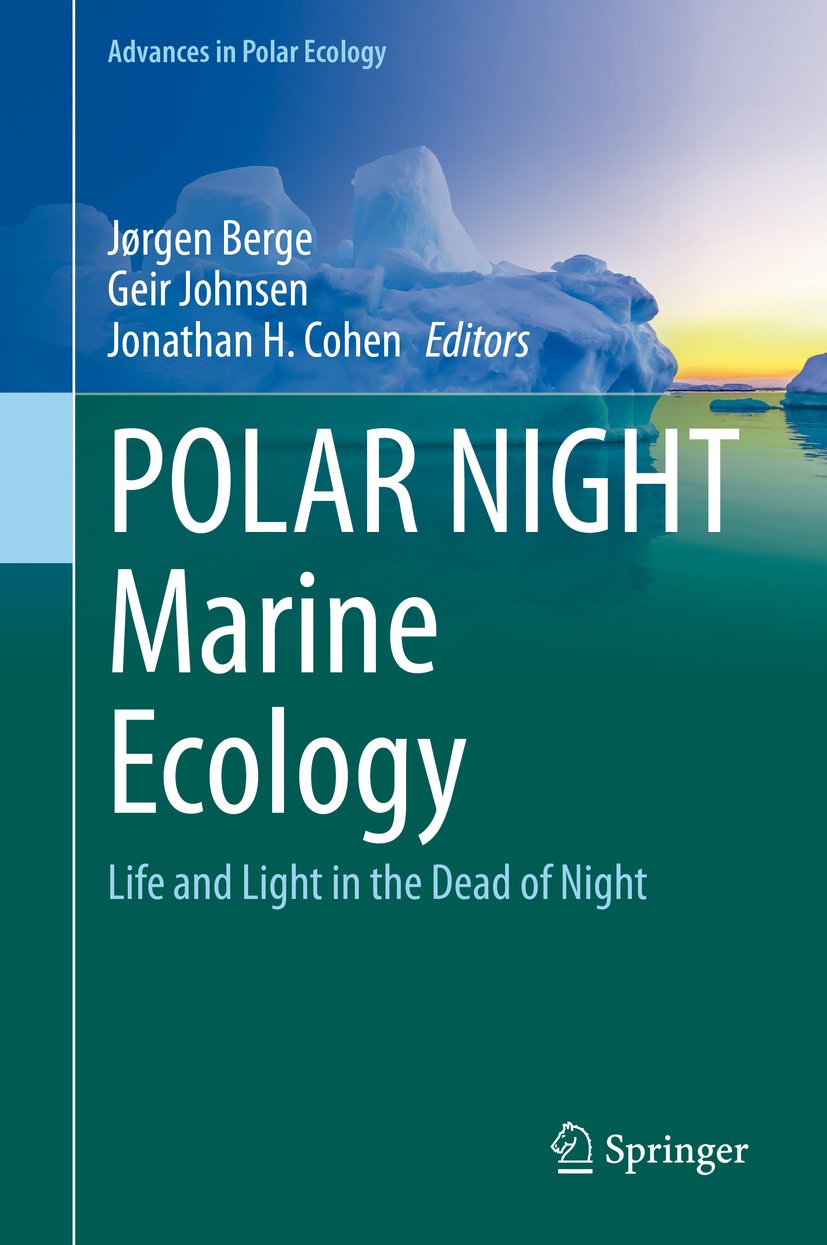POLAR NIGHT Marine Ecology
by Jørgen Berge
2020-07-16 01:31:14
POLAR NIGHT Marine Ecology
by Jørgen Berge
2020-07-16 01:31:14
Until recently, the prevailing view of marine life at high latitudes has been that organisms enter a general resting state during the dark Polar Night and that the system only awakens with the return of the sun. Recent research, however, with coordin...
Read more
Until recently, the prevailing view of marine life at high latitudes has been that organisms enter a general resting state during the dark Polar Night and that the system only awakens with the return of the sun. Recent research, however, with coordinated, multidisciplinary field campaigns based on the high Arctic Archipelago of Svalbard, have provided a radical new perspective. Instead of a system in dormancy, a new perspective of a system in full operation and with high levels of activity across all major phyla is emerging. Examples of such activities and processes include: Active marine organisms at sea surface, water column and the sea-floor. At surface we find active foraging in seabirds and fish, in the water column we find a high biodiversity and activity of zooplankton and larvae such as active light induced synchronized diurnal vertical migration, and at seafloor there is a high biodiversity in benthic animals and macroalgae. The Polar Night is a period for reproduction in many benthic and pelagic taxa, mass occurrence of ghost shrimps (Caprellides), high abundance of Ctenophores, physiological evidence of micro- and macroalgal cells that are ready to utilize the first rays of light when they appear, deep water fishes found at water surface in the Polar night, and continuous growth of bivalves throughout the winter. These findings not only begin to shape a new paradigm for marine winter ecology in the high Arctic, but also provide conclusive evidence for a top-down controlled system in which primary production levels are close to zero. In an era of environmental change that is accelerated at high latitudes, we believe that this new insight is likely to strongly impact how the scientific community views the high latitude marine ecosystem. Despite the overwhelming darkness, the main environmental variable affecting marine organisms in the Polar Night is in fact light. The light regime during the Polar Night is unique with respect to light intensity, spectral composition of light and photoperiod.
Less






























